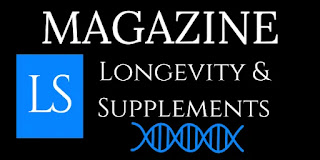Post Top Ad
Tuesday, June 14, 2022
The ultimate cure of aging
Over the past 100 years, humanity's life expectancy has experienced a remarkable and steady increase in many parts of the world. Advances in medicine, public health, nutrition, and improvements in living conditions have played pivotal roles in this upward trend. Here is an overview of how life expectancy has evolved over the past century:
Early 20th Century (1900-1920s):
At the beginning of the 20th century, life expectancy was relatively low, averaging around 30 to 40 years in many countries. High infant mortality rates, infectious diseases, and limited access to medical care were major factors contributing to the lower life expectancy.
Mid-20th Century (1930s-1950s):
During this period, advancements in healthcare, including the widespread use of vaccines, antibiotics, and improvements in sanitation, contributed to significant reductions in infectious diseases like tuberculosis and influenza.
Life expectancy began to rise steadily, with many countries seeing an increase of 10 to 20 years compared to the early 1900s.
Late 20th Century (1960s-1990s):
The mid to late 20th century witnessed substantial progress in medical research, leading to the development of treatments for chronic diseases like heart disease and diabetes.
Improved access to healthcare, increased availability of medical services, and health education initiatives further contributed to increased life expectancy.
The average life expectancy continued to rise at a similar pace as in the mid-20th century, with many countries experiencing further gains of 10 to 20 years.
21st Century (2000s-Present):
In the 21st century, life expectancy has continued to increase, albeit at a slightly slower rate in some regions.
Continued advancements in medical technology, early disease detection, and improved treatments for various health conditions have played key roles in extending life expectancy.
However, certain challenges, such as increasing rates of chronic diseases and aging populations in some countries, have put pressure on healthcare systems.
Overall, global life expectancy has increased significantly over the past century. In 2021, the average global life expectancy was around 72 years, with some countries reaching life expectancies exceeding 80 years. However, life expectancy can vary widely between different regions and countries due to disparities in healthcare, nutrition, lifestyle, and socioeconomic factors.
Continued efforts in healthcare, public health, and research are essential to addressing the challenges and opportunities related to aging populations and ensuring further gains in life expectancy while promoting healthy and productive aging.
Till today, there is no definitive maximum lifespan that humanity can achieve. While advancements in medicine, nutrition, and living conditions have led to increased life expectancy over the centuries, there is still considerable debate among scientists about whether there is an absolute limit to human lifespan.
The longest confirmed human lifespan on record belongs to Jeanne Calment, a French woman who lived to be 122 years and 164 days old. However, some researchers believe that even longer lifespans might be theoretically possible in the future due to ongoing advancements in healthcare, genetics, and anti-aging research.
The idea of whether there is a maximum lifespan for humans is a topic of interest in the field of biogerontology, which studies the biological processes of aging. Some scientists argue that there may be genetic and physiological constraints that limit the maximum human lifespan. They point to the natural wear and tear on the body's cells and tissues over time, as well as the increased risk of age-related diseases.
Other researchers, however, propose that by understanding and intervening in the biological processes of aging, it might be possible to extend human lifespan significantly beyond what we observe today. This idea is based on ongoing investigations into slowing down the aging process, regenerative medicine, and potential breakthroughs in biotechnology.
It's important to note that while there is speculation about the theoretical maximum lifespan, accurately predicting how long humans might live in the future remains uncertain. Various factors, such as technological advancements, public health policies, and lifestyle choices, will all play a role in shaping future life expectancy.
As scientific knowledge and medical technology continue to advance, our understanding of aging and longevity may change, potentially influencing the conversation about the maximum lifespan of humanity. However, as of now, we cannot definitively state a fixed maximum age that humans can achieve.
Human aging at the cellular level is a complex and multifaceted process involving various molecular and cellular changes. Here are some key mechanisms and factors that contribute to cellular aging:
Telomere Shortening: Telomeres are repetitive DNA sequences at the ends of chromosomes that protect them from deterioration or fusion with neighboring chromosomes. With each cell division, telomeres gradually shorten, eventually leading to cellular senescence (cellular aging) or cell death. Telomere shortening is considered one of the fundamental causes of cellular aging.
Cellular Senescence: Cellular senescence refers to the state in which cells can no longer divide or function correctly. Senescent cells accumulate with age and can secrete harmful substances, leading to inflammation and tissue damage.
DNA Damage: Over time, cells experience damage to their DNA through various factors, including oxidative stress, radiation, and exposure to harmful substances. DNA damage can lead to mutations, disruptions in cell function, and increased risk of age-related diseases.
Mitochondrial Dysfunction: Mitochondria are the energy-producing organelles within cells. Over time, mitochondrial function can decline, leading to reduced energy production and an increase in the generation of harmful reactive oxygen species (ROS), which can damage cellular components.
Accumulation of Cellular Waste: As cells age, their ability to remove and recycle damaged proteins and organelles may decline. This can result in the accumulation of cellular waste products, contributing to cellular dysfunction and tissue aging.
Epigenetic Changes: Epigenetic modifications refer to changes in gene expression patterns that occur without altering the underlying DNA sequence. With age, the epigenetic landscape of cells can change, influencing gene regulation and contributing to aging-related changes in cellular function.
Altered Cellular Communication: Aging can disrupt intercellular communication, leading to changes in signaling pathways that control various cellular processes, such as growth, repair, and immune response.
Cellular Stress Responses: Cellular stress response pathways, such as those involving heat shock proteins and autophagy, play a crucial role in maintaining cellular health and function. As cells age, their stress response mechanisms may become less efficient, leading to increased susceptibility to damage and dysfunction.
It's important to recognize that cellular aging is a complex interplay of multiple processes, and scientists continue to explore the intricacies of these mechanisms to better understand and potentially intervene in the aging process. By gaining a deeper understanding of cellular aging, researchers hope to develop strategies and treatments to promote healthy aging and address age-related diseases.
1.Medical Longevity:
At present, there is no known "cure" for aging in the sense of stopping or reversing the natural process of aging entirely. Aging is a complex biological phenomenon that involves multiple interconnected processes at the molecular, cellular, and systemic levels. While significant progress has been made in understanding the mechanisms of aging, finding a comprehensive and definitive cure for aging remains a challenging and ongoing scientific endeavor.
However, there are several areas of research and potential interventions that hold promise in slowing down the aging process and promoting healthy aging:
Caloric Restriction: Caloric restriction, the practice of reducing calorie intake without malnutrition, has been shown to extend the lifespan and improve healthspan (the period of life spent in good health) in various organisms, including rodents. Researchers are investigating the underlying mechanisms by which caloric restriction affects aging and whether similar effects can be achieved through mimetic compounds or targeted therapies.
Genetic Interventions: Genetic manipulations in model organisms have identified specific genes and pathways that play a role in aging. By modulating these genes, researchers have achieved significant lifespan extensions in animal studies. While translating these findings to humans is a complex process, genetic interventions remain an area of active research.
Senolytics: Senescent cells, which accumulate with age and can contribute to age-related tissue dysfunction, have become a target for research on aging. Senolytics are drugs or interventions that selectively target and eliminate senescent cells, potentially improving tissue function and healthspan.
Telomerase Activation: Telomeres, the protective caps at the ends of chromosomes, shorten with each cell division. Telomerase activation, the enzyme that can extend telomeres, has been investigated as a potential strategy to counteract telomere shortening and cellular senescence.
Anti-Inflammatory Interventions: Chronic inflammation is associated with aging and age-related diseases. Anti-inflammatory interventions, either through drugs or lifestyle modifications, have the potential to reduce age-related inflammation and improve health outcomes.
Regenerative Medicine: Stem cell research and regenerative medicine aim to repair or replace damaged tissues and organs, which could have significant implications for aging-related health conditions.
It's essential to note that while these areas of research show promise, the concept of a complete cure for aging, in the sense of stopping or reversing aging entirely, remains speculative and subject to ongoing investigation. The aging process is complex and influenced by a combination of genetic, environmental, and lifestyle factors. As scientific knowledge advances, researchers hope to develop strategies to promote healthy aging and extend healthspan, even if achieving immortality or complete reversal of aging remains beyond our current understanding and capabilities.
2.Future life expectancy & Longevity:
Nowadays, there is a general expectation among experts that human life expectancy will continue to rise, but the rate of increase might vary across different regions and time periods. The projections for life expectancy are based on past trends, ongoing advancements in healthcare, and improvements in living conditions. However, several factors may influence the future trajectory of life expectancy:
Advances in Medicine and Healthcare: Continued progress in medical research, the development of new treatments, and improvements in healthcare delivery can lead to better management of diseases and contribute to increased life expectancy.
Disease Prevention and Public Health: Efforts to prevent diseases through vaccinations, health education, and public health initiatives can have a significant impact on life expectancy by reducing the burden of infectious and chronic diseases.
Lifestyle Changes: Encouraging healthier lifestyles, including better nutrition, increased physical activity, and reduced tobacco and alcohol consumption, can positively influence life expectancy by preventing or delaying the onset of chronic diseases.
Environmental Factors: Environmental conditions, including access to clean water, sanitation, and air quality, can affect overall health and life expectancy.
Socioeconomic Inequalities: Disparities in access to healthcare and socioeconomic conditions can influence life expectancy among different populations. Reducing these inequalities is crucial to ensuring broader improvements in life expectancy.
Aging Population: The aging population poses both opportunities and challenges. With a growing elderly population, there will be an increased focus on geriatric care and addressing age-related health issues.
Potential Challenges: Despite progress, new health challenges could emerge, such as the spread of infectious diseases, antibiotic resistance, or the impact of climate change on health.
While life expectancy is expected to continue rising, it is important to recognize that predicting the future is complex, and unexpected events or developments can influence these projections. Additionally, global and regional differences in life expectancy are likely to persist due to varying levels of healthcare infrastructure, economic conditions, and social factors.It's essential to continue investing in healthcare, research, public health, and social policies to support healthy aging and improve life expectancy for populations worldwide.
Subscribe to:
Post Comments (Atom)
Post Top Ad
Your Ad Spot
test















.png)







.png)
.png)
No comments:
Post a Comment